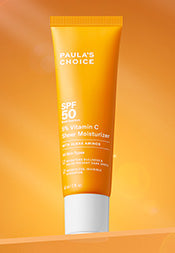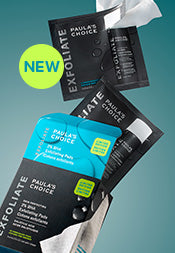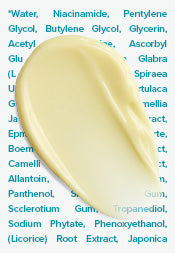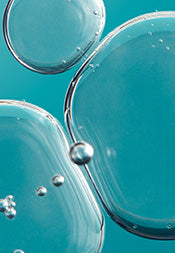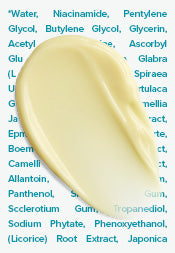WHAT IS SKIN PURGING?
Have you ever experienced a sudden breakout after starting with a new skincare product? Before your mind starts reeling that you’ve unwittingly worsened your skin issues, there’s actually something called skin purging.
WHAT IS SKIN PURGING?
Skin purging is a process where a new skincare product causes what seems to be a ‘breakout’.
Clogged pores due to a buildup of dead skin forms a microcomedone under the surface of the skin. These microcomedones will normally take weeks to develop into a pimple, whitehead, blackhead, or cyst. However, if you just started with a new product, it may be causing these microcomedones to surface or ‘mature’ faster.
HOW LONG DOES SKIN PURGING LAST?
Our skin cells naturally and constantly replace themselves throughout our lifetime. New cells are created in the lowest layer of the skin, and old cells on the surface layers are exfoliated naturally (and invisibly).
For a 30-year old adult, it’s an average of 28 days for a full cycle. However, as we grow older, this natural process slows down, but can be aided with chemical exfoliants. If you’re younger, this process is much quicker.
Purging should then last the length of time for a full cycle. While that is different for everyone, it should on average last between 4 to 6 weeks. However, if your skin isn’t getting better after 6 to 8 weeks, your skin may be having an adverse reaction to the new product(s).
WHAT CAUSES SKIN PURGING?
Skin purging happens when you start to use new skincare products with active ingredients that increases skin cell turnover (i.e. accelerate the process where new skin cells are made). These include ingredients such as glycolic acid (AHA), salicylic acid (BHA), Vitamin C, and Retinoids.
Chemical exfoliants such as AHA and BHA work by breaking down the ‘glue’ which hold skin cells together. This loosens them to reveal the new skin underneath.
Retinoids such as Tretinoin and Retinol increases skin cell turnover by ‘telling’ older cells in the upper layer of skin to die quicker, to allow newer, healthier cells to surface faster.
Vitamin C such as L-Ascorbic Acid and Magnesium Ascorbyl Phosphate works somewhat as a hybrid of chemical exfoliants and Retinoids. Vitamin C is a mild exfoliant, so it helps you to shed dead skin cells, but it also can signal the body to produce more collagen – a key component in skin cells.
If you see any of these ingredients on the label, then don’t worry, this probably just means that your new skincare product is working to get the gunk out from your skin!
However, how do you distinguish between having a breakout following the use of a new skincare product to be a case of skin purging, and not that new product clogging your pores or irritating your skin?
SKIN PURGING VS. BREAKOUTS – HOW DO YOU DIFFERENTIATE THEM?
While it may not always be straightforward to distinguish between the two, here are some guidelines which can help you:
- A purge usually happens in areas where you usually get pimples. As purging is supposed bring underlying microcomedones to the surface, if it’s not already developing before, then it’s most likely irritation or sensitivity to the product that’s breaking you out.
- If the breakout occurs in new areas, that’s more likely to be your skin’s adverse reaction to the new skincare product.
- If you’re using a new product that doesn’t contain active ingredients which increases skin cell turnover, the breakout is less likely to be skin purging. That’s because active ingredients in skincare products will encourage skin cell turnover and cause underlying microcomedones to rise to the surface and trigger a breakout.
Active ingredients which could increase skin cell turnover include:
- Glycolic acid (AHA)
- Salicylic acid (BHA)
- Retinoids
- Vitamin C
- Benzoyl peroxide
If a pimple is part of a skin purging, its life cycle will be much shorter than a normal pimple or one that’s caused by a reaction to skincare products. If the breakout lasts longer than 4 to 6 weeks upon using the new skincare product, it probably isn’t part of a skin purge and may signal a bigger skin issue.
How To Treat Purging Skin and Minimize It's Severity?
If every sign points to you experiencing a skin purge when using a new skincare product, is there anything you can do to make the breakouts less severe? Unfortunately, there isn’t much you can do except waiting it out patiently. Besides waiting for the episode to blow over, the following tips could also help you minimize the severity of the purging breakout:
- Remember to protect and care for your pimples by not probing them with your fingers or using harsh pimple creams or scrubs. Harsh skincare products would not be able to get rid of those pesky spots faster. Rather, it will aggravate the problem and potentially make it worse!
- When using a new skincare product, especially those with active ingredients which you’ve never used before, introduce it slowly in the beginning to minimize the effect of skin purging. You can start with a small amount or use the new skincare product less frequently in the beginning, before ramping up its frequency of use.
- To speed up recovery from the purge, help your skin stay in its best form by keeping it hydrated. It’s advisable to use gentle moisturizers and cleansers.
- Avoid exposing your skin to the sun when you’re having a purging episode, and always remember to use a sunscreen!


